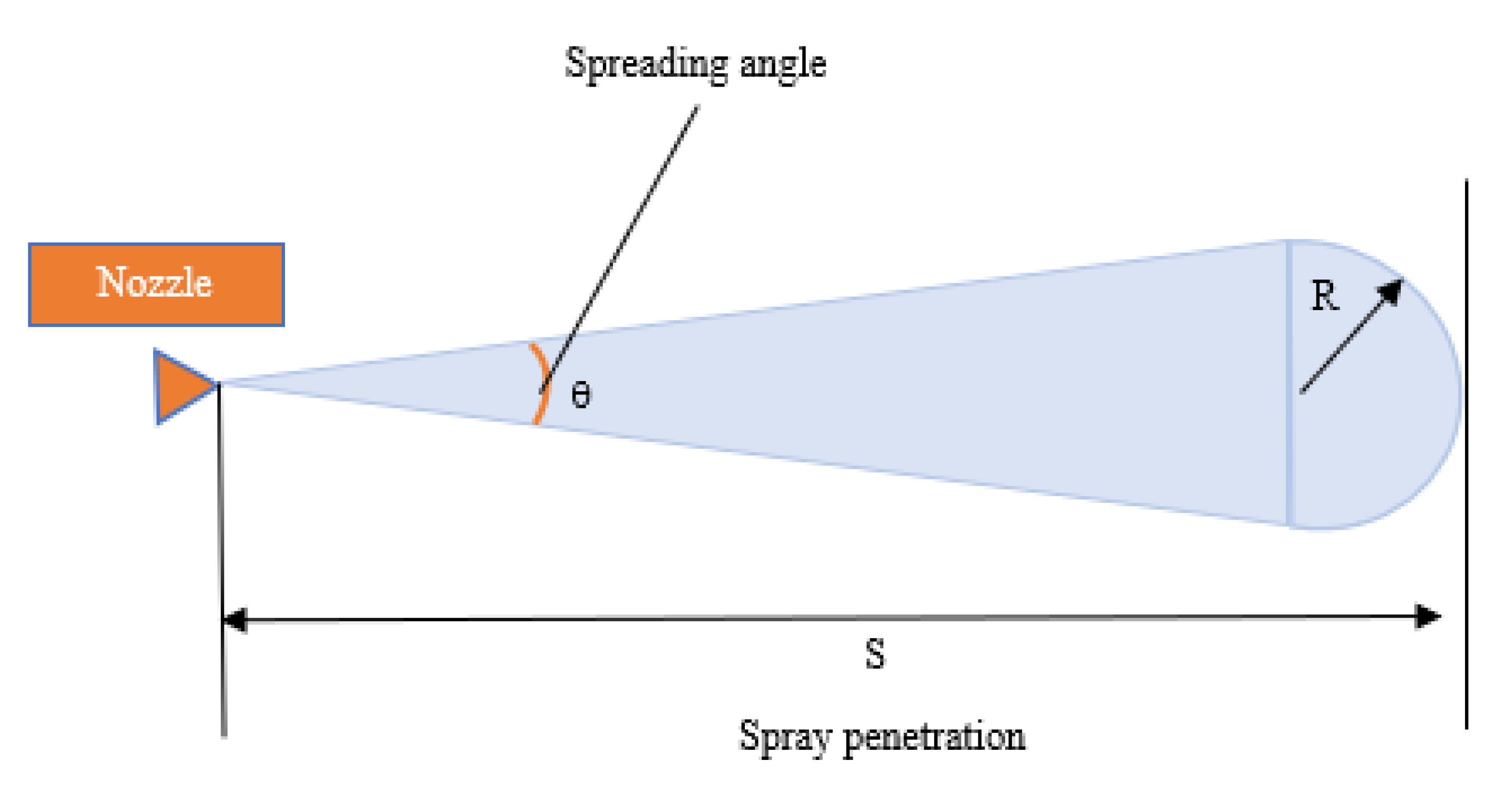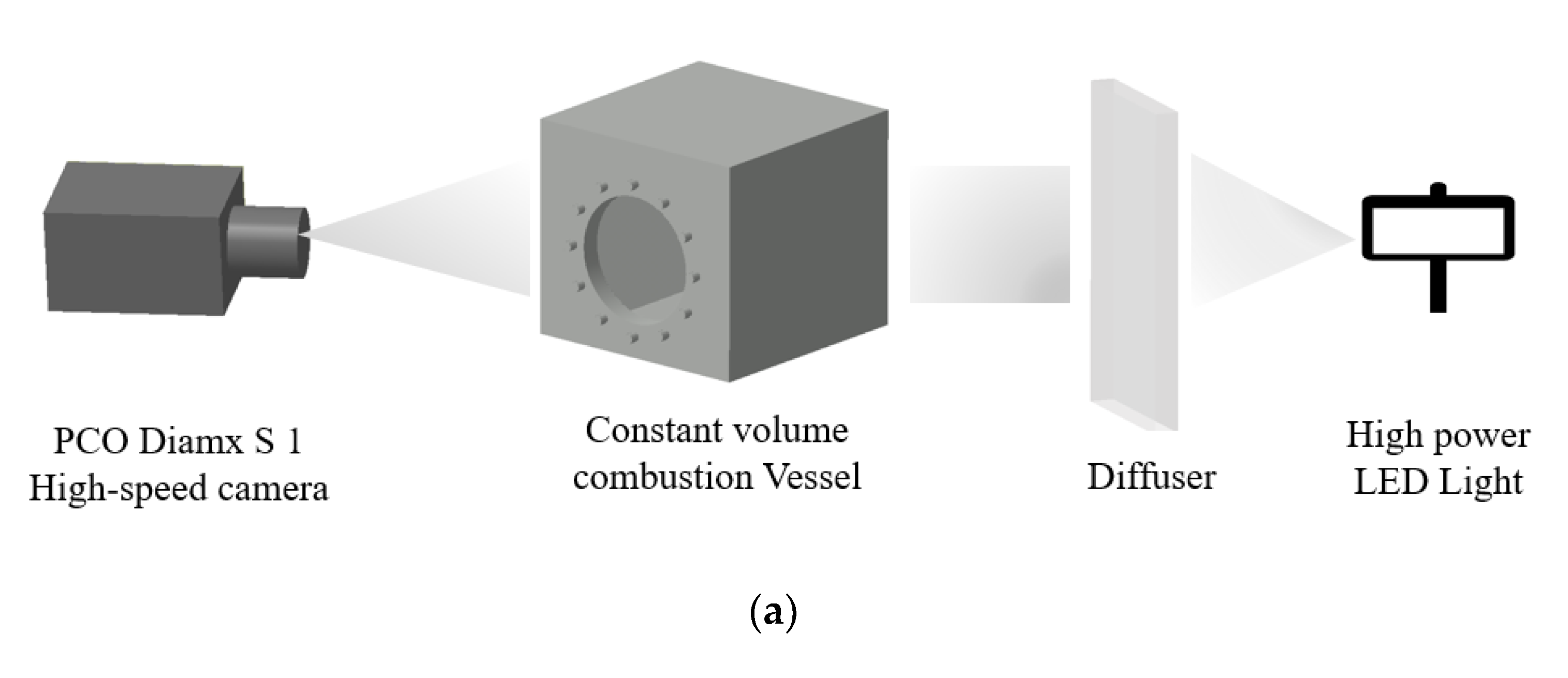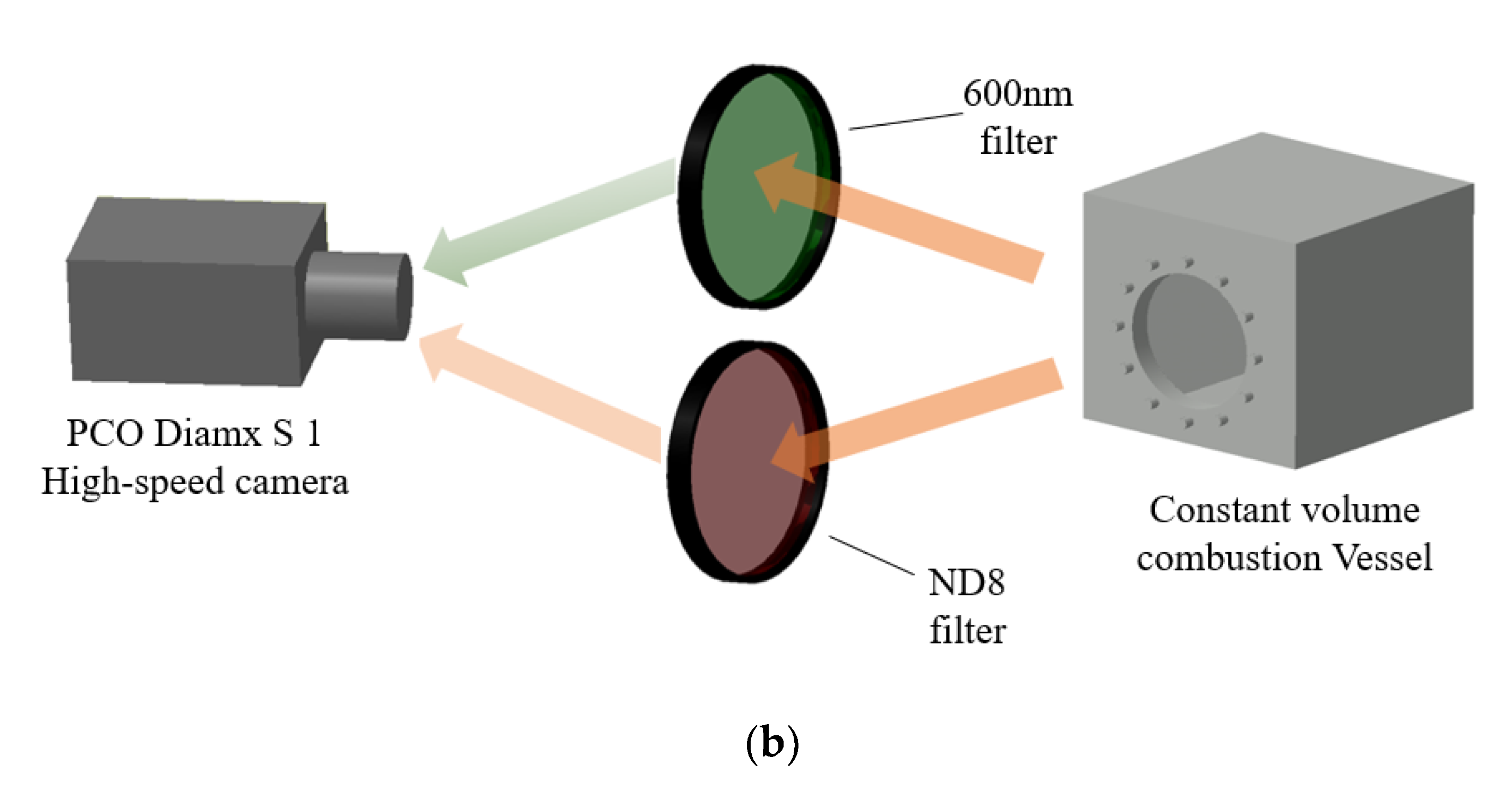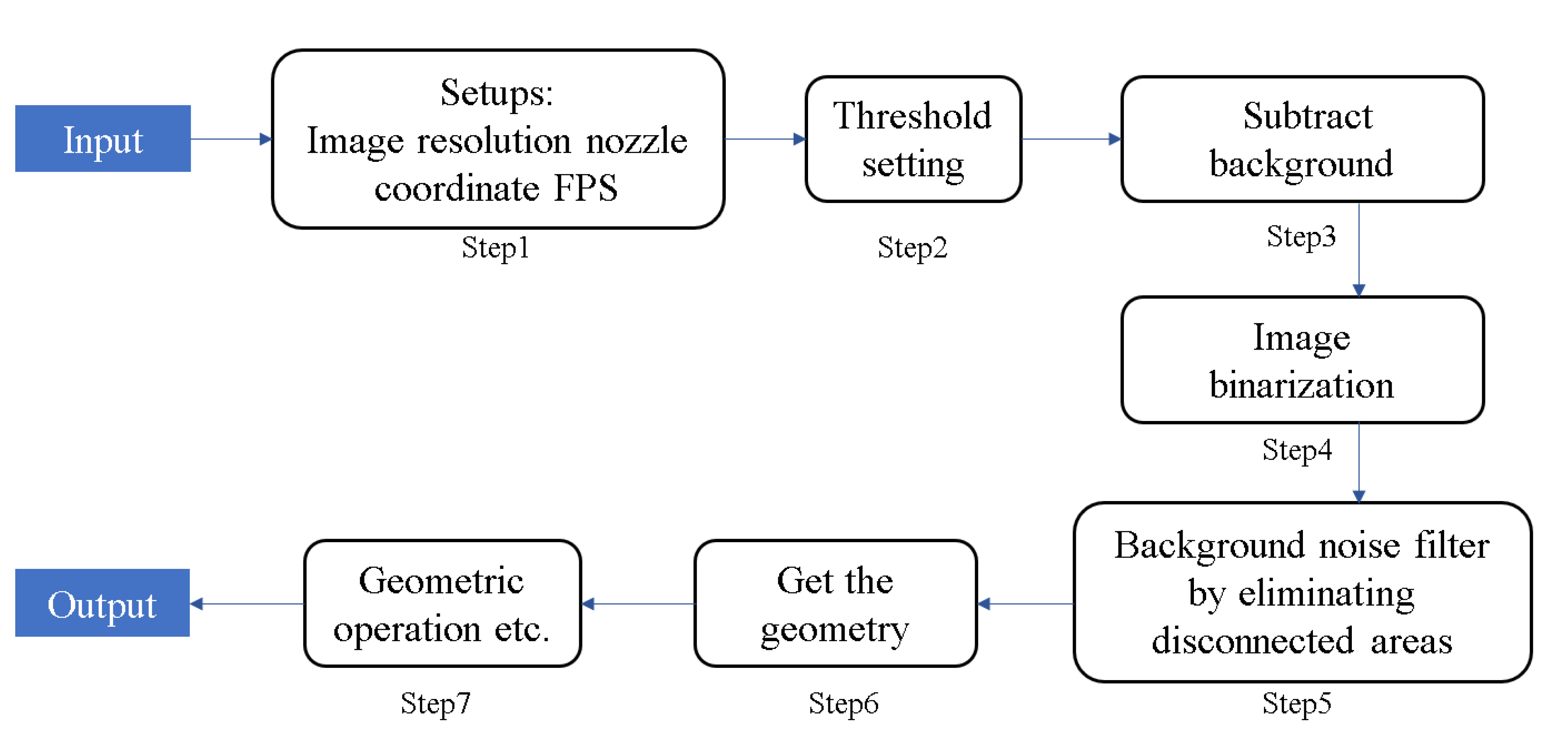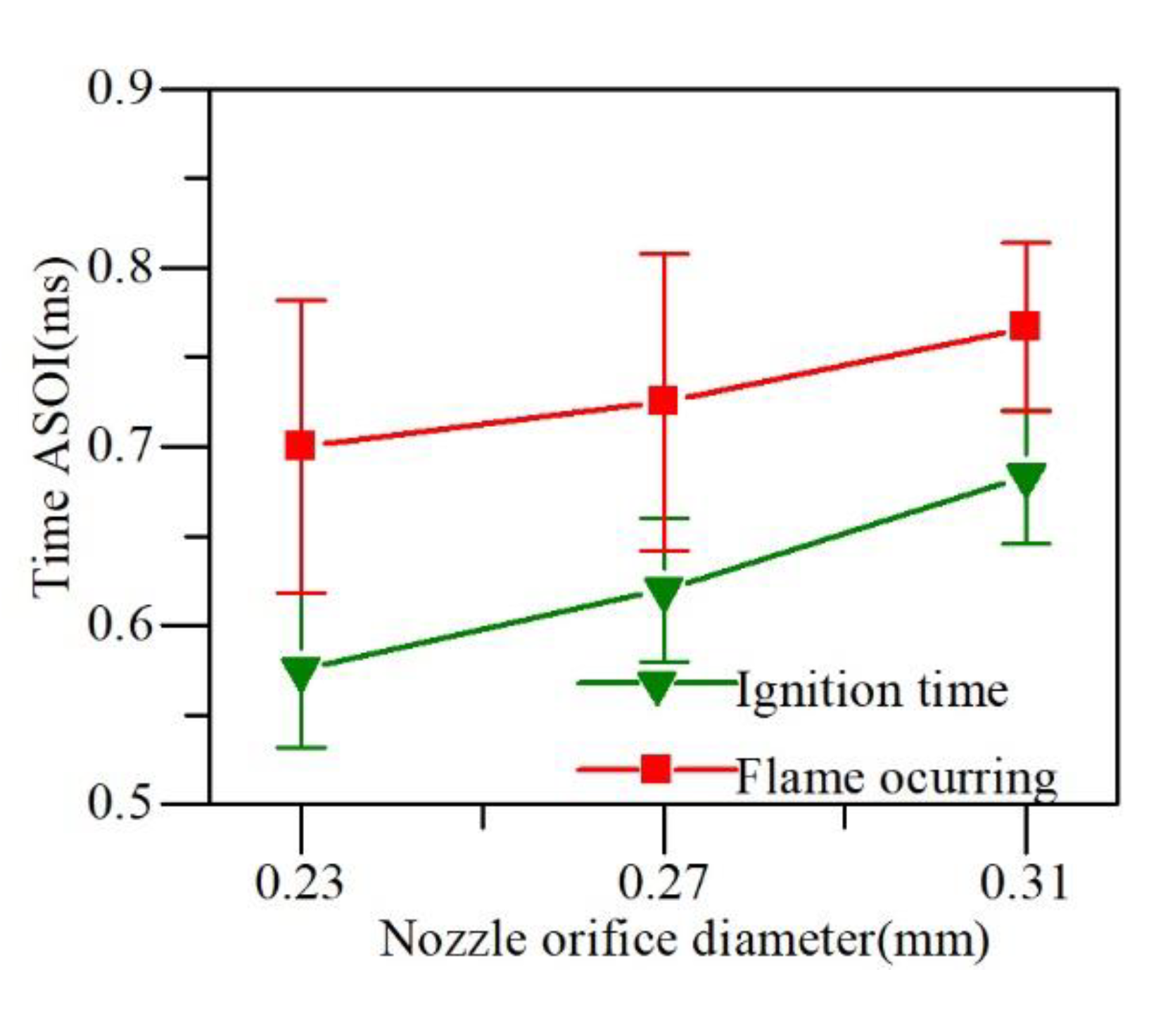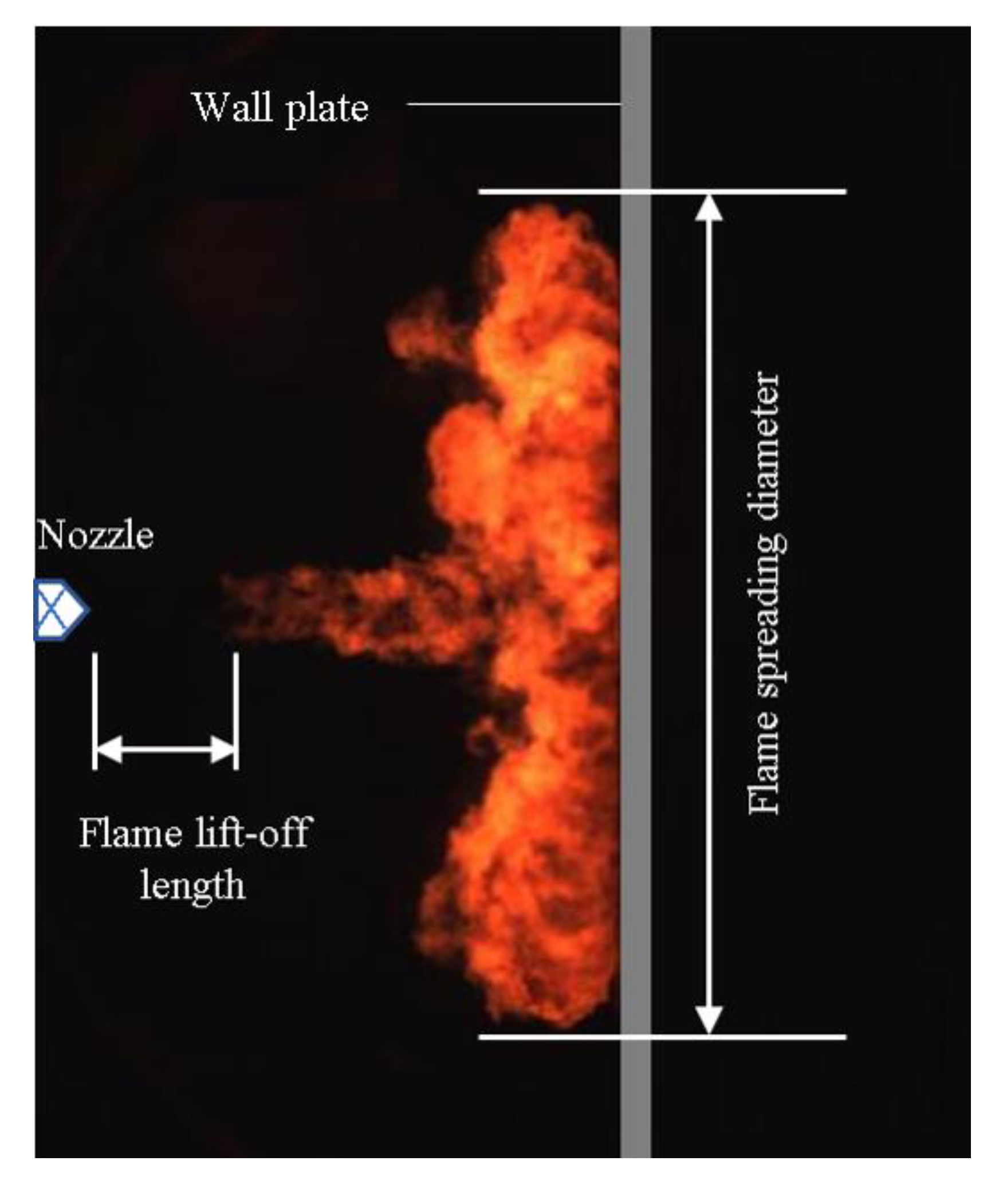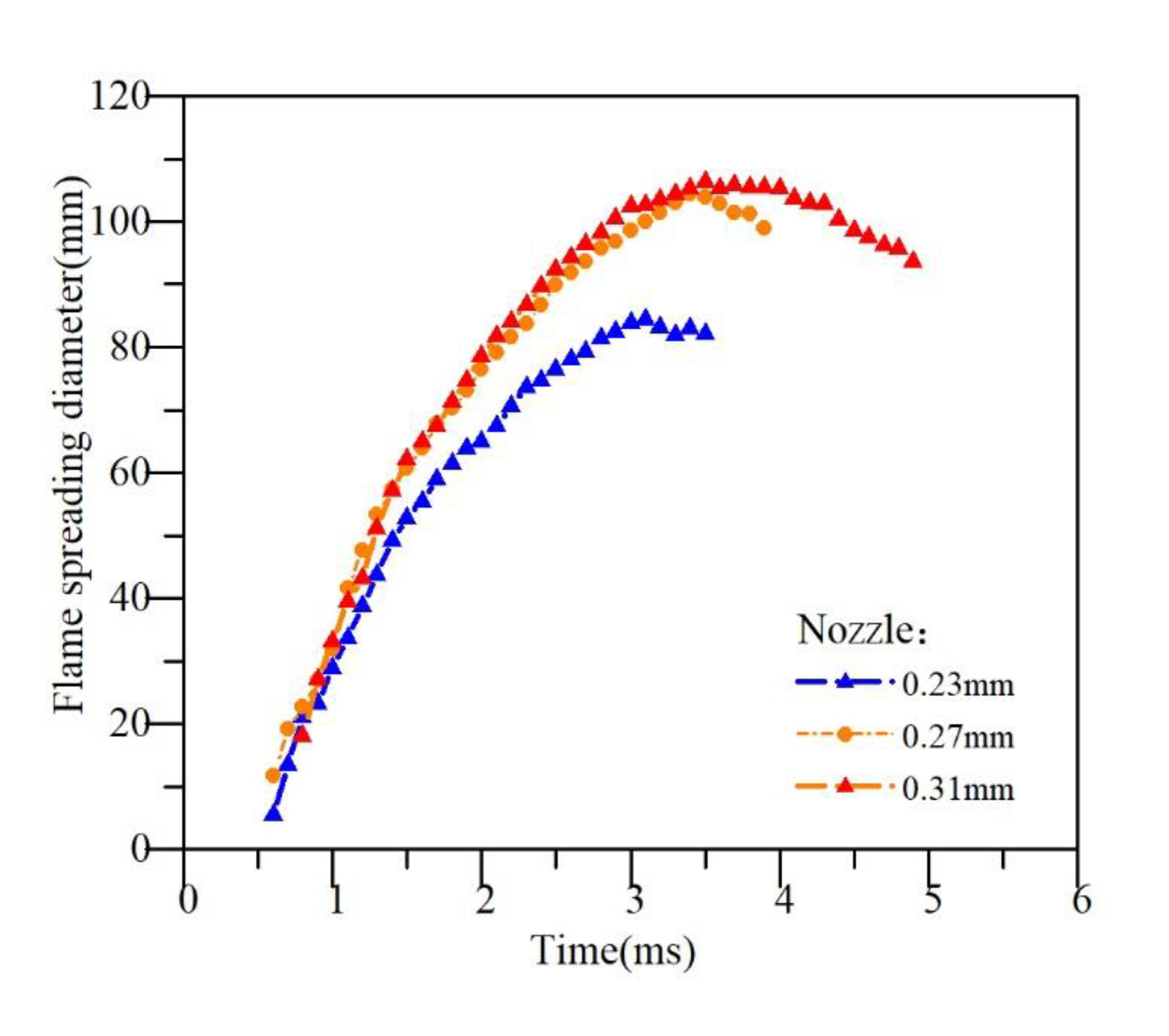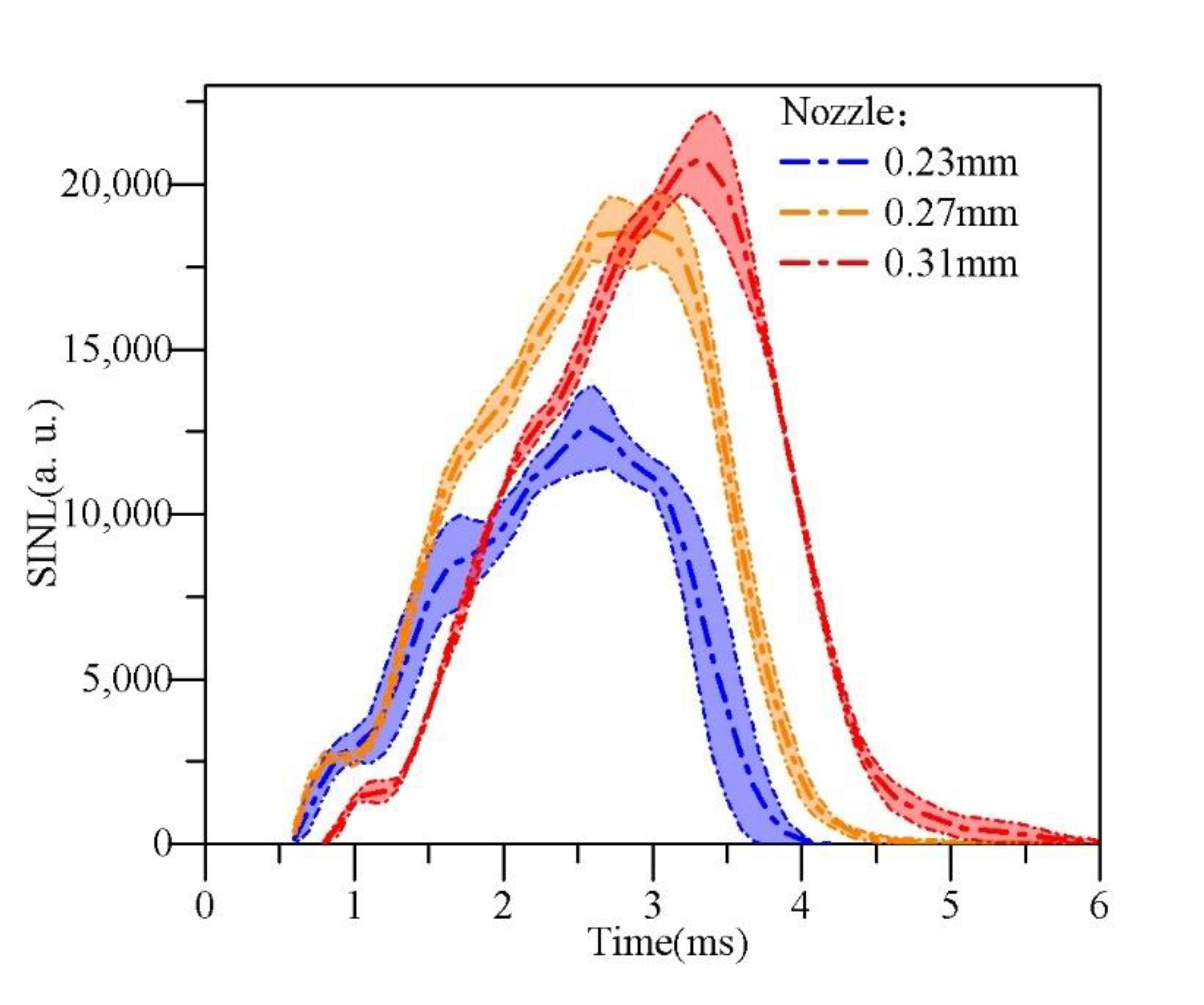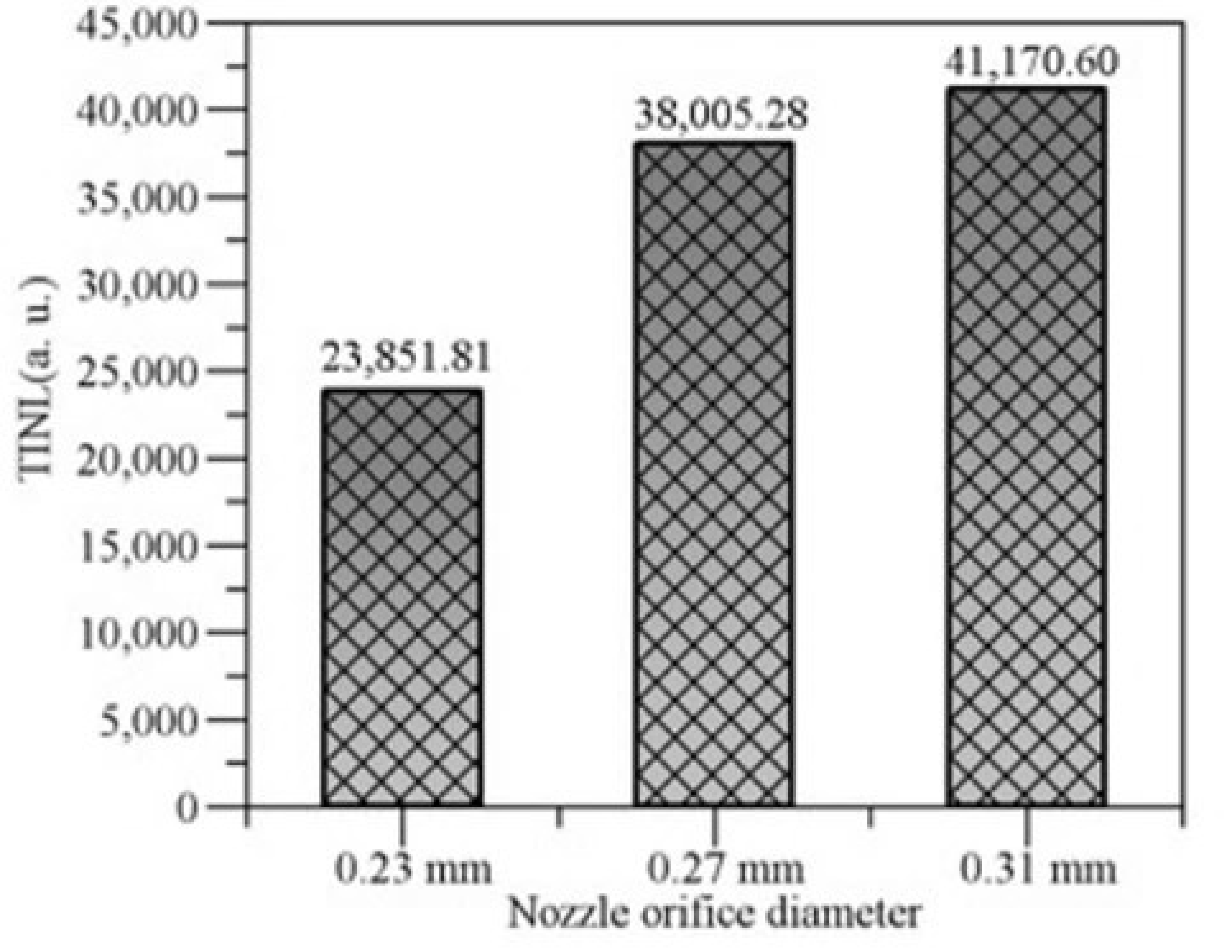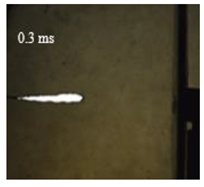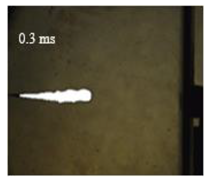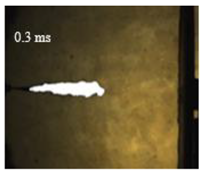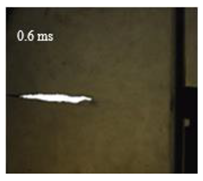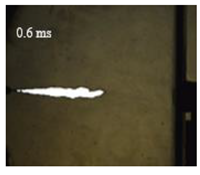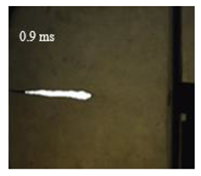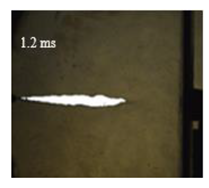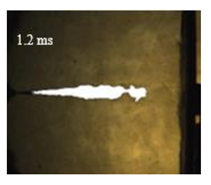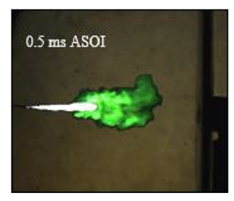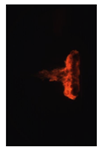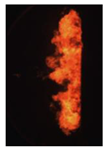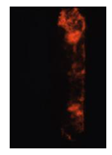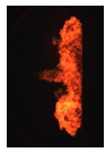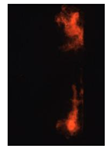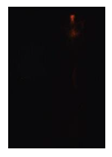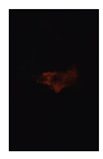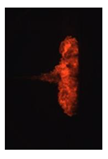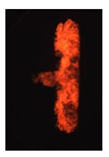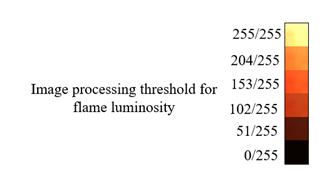1. Introduction
Diesel engines have been widely used in various fields for the features of low fuel consumption, high torque, reliability and durability, and have been used in more than two-thirds of highway passenger and freight transportation. Therefore, the diesel engine will still play a key role in the world for a long time. The combustion of the direct injection (DI) diesel engine will always be the research focus because of its severe emissions like PM (Particulate Matter) pollutants [
1].
Soot is the main component of diesel PM pollutants. The formation process or the nucleation of elementary carbon particles occurs mostly in areas with worse mixture during combustion. Therefore, the atomization degree of fuel spray and the quality of fuel and gas mixture directly determines the formation of soot in the latter combustion process [
2,
3], and the structural parameters of the fuel injection system and combustion chamber are one of the important factors that affect the fuel-air mixing of diesel engine [
4].
With the high speed and compactness development of DI (direct injection) diesel engines, the phenomenon of wall impinging during the combustion process became very common. For small-size diesel engines, the space reduction of the combustion chamber makes the spray impinging the surface of the cylinder or piston easier. The study by Li et al. [
5] showed that when the obvious liquid impingement of the diesel spray occurred, the soot emissions increased while thermal efficiency reduced significantly, meaning that the liquid impingement had a direct impact on the mixture of fuel and air and worsened the combustion process. Another study by Wang et al. [
6] shows that the length of the spray liquid was also affected directly by the size of the nozzle, which is one of the most important construction parameters to be considered in fuel injection of the DI engine [
7].
In addition to the liquid penetration and the longest distance that the spray can achieve in the injection, other parameters of the spray form, such as spray area and volume, can also affect the injection and mixture quality. These parameters can be expressed in a spray conceptual model, which was quantified by Delacourt et al. [
8]. The following model assumed that the spray body was composed of a cone and a hemisphere, as shown in
Figure 1.
The spray area
A and spray volume
V can be calculated approximately according to the spray penetration
S and spray cone angle
θ, which was defined by the maximum internal angle between spray peripheries [
9], as shown in Formulas (1) and (2):
In the visual experimental research, there are a large number of basic research conclusions and methods for reference. As for the spray process, the common imaging methods such as the schlieren method [
10] and Mie scattering technology [
11] are both beneficial to the spray jet imaging. At the internal working temperature of the diesel engine (about 800 K), the diffusion angle and penetration of the evaporated spray decreased significantly compared with the diesel spray at normal temperature [
11]. The spray penetration decreased with the decreasing of nozzle diameter [
10], which means that the reduction of nozzle aperture was beneficial to fuel atomization and fuel-air mixture [
12].
In the combustion process, previous studies [
13] analyzing the obtained soot images have shown that the soot generated during combustion comes from the internal part of the diffusion flame. In the process of combustion, the formation of soot is often determined by temperature. In past research, Dongerbreek [
14] and Mueller [
15] verified the certain relationship between the flame luminosity and temperature as a function with a lot of factors. This relationship was used to characterize the soot generation in combustion with the luminosity of the diffusion flame morphology from the camera in many experiments [
16,
17].
When a wall impingement system was settled in the visualization experiment, the shape of the diffusion combustion flame and the spray jet will change in comparison to the free spray and combustion process. As shown in
Figure 2, the concept model of the diesel engine wall impingement combustion proposed by Bruneaux [
18] shows that the flame shape will spread along the impingement wall plate and the generation area of soot is mainly concentrated in the area near the wall.
Although there is plenty of research about spray and combustion impingement, no definite conclusion about the influence of soot generation exists. Some studies have shown that combustion is enhanced with impingement, resulting in a decrease of soot generation [
19]. In the injection process, spray wall-impingement will lead to better atomization compared with free spray or a higher concentration region near wall surfaces [
20,
21,
22].
Most of the research on flame-wall impinging combustion focus on flame diffusion and soot formation after injection, but less focus on the correspondence between spray ignition and combustion under the same experiment conditions. The liquid spray impingement was considered to be avoided in the modern design of diesel engines. However, the interaction between the cylinder or piston and the diffusion flame still exists even when the liquid spray impingement is avoided, that is, the flame impingement could occur during the combustion without liquid fuel impingement. Under this common phenomenon, there is less research on the effect of nozzle size on soot formation after combustion [
23].
Complete analysis and verification from the visualization experiment are still necessary to observe the effect of different nozzle orifice diameters on the fuel-air mixture and the evolution of the flame shape after the flame impinging. It is also necessary to study whether the change of aperture of different injectors will cause different spray spreading and flame diffusion trends.
In this paper, the direct high-speed photography method based on the constant volume combustion vessel experiment was used to test the evaporative spray pattern of diesel fuel and the phenomenon of flame-wall impingement under different injection nozzle orifice diameter conditions. By analyzing the image information of the spray and flame, quantitative parameters, such as the form, area, and luminosity of the spray or flame under the same experiment conditions can be obtained. The flame formation and luminosity distribution directly characterize the high-temperature reaction area and the soot particle generation area, and the effect of different nozzle orifice diameters on the combustion characteristics in the complete combustion process of a diesel engine can be analyzed from the soot generation. These conclusions are of great significance for the design of fuel injection parameters and the compact combustion structure of modern diesel engines.
3. Results and Discussion
3.1. Analysis of Evaporative Spray
The spray experiment conditions were consistent with actual diesel engine working conditions. Combustion temperature of the diesel engine during operation can reach 800–1000 K. After reaching the 800 K ambient temperature environment, the injected fuel will quickly heat up, evaporating and mix with the air. Therefore, after the LED light path passes through the constant volume bomb, only the liquid pattern of the spray can be captured by the high-speed camera. The following binary graph can be gained by processing the origin images using the special image processing program in MATLAB
®. The
Table 4 showed the binary graph of the spray jet at each moment after start of injection (ASOI):
It can be directly observed from the image that the size of the shadow area in the spray image changes positively with the size of the nozzle orifice diameter (from left to right).
The specific image processing program in MATLAB
® can also help to obtain quantitative indicators at different moments, which can be used to characterize the mixing degree of sprayed fuel and air. The fuel-air mixing degree mainly depends on the air entrainment characteristics of the spray. When other conditions are fixed, the air entrainment is mainly affected by the spray penetration and spreading angle, which then affects the indicators, like spray area and spray volume, that are used to evaluate the spray air entrainment characteristics [
25,
26].
Figure 8 shows the spray penetration distance under high temperature combustion vessel conditions. As can be seen from the figure, under the three different nozzle orifice diameters (0.23 mm, 0.27 mm and 0.31 mm), the smaller diameter spray reaches the larger spray penetration distance faster. This is because the pore size directly affects the oil beam rate and the mixing degree of the mixed gas, and these factors will further affect the energy consumption after the wall collision, the reaction rate and the degree of air entrainment in the combustion process, and finally, affect the soot production [
26].
The penetration of the spray under the relatively large nozzle orifice is also larger due to the low fuel and air mixing quality in the injection process, so more liquid area is retained in the image. The average liquid length of the spray can be obtained by calculating the average penetration distance of the spray in the stable process (
Table 5).
The average liquid phase length of the spray at 0.23 mm orifice is 12% and 23% shorter than 0.27 mm and 0.31 mm, respectively.
The spray area and volume calculated according to the measured spray spreading cone angle are shown in the
Figure 9.
It can also be seen from the evaporative spray area and spray volume that we obtained by calculating the penetration distance and the spray diameter, that the spray area and volume at the 0.31 mm nozzle orifice were greater than that at the 0.23 mm and 0.27 mm nozzle orifices. In this case, when the other conditions were fixed, the injector at a relatively small orifice (0.23 mm) could accelerate the atomization of the liquid phase of the diesel spray, promoting the mixing of oil and gas with diesel fuel, and further improving the combustion quality.
The fixed volume combustion vessels combination experiment of ultra-high injection pressure (300 MPa) and micro-injector (0.08 mm) conducted by Wang et al. 5 concluded that the production of soot under conventional injectors will collide because of the liquid fuel impingement and reduced thermal efficiency of the diesel engine.
In the repeated spray experiments of this paper, due to the high ambient temperature (800 K), the high enthalpy value gas entrained into the spray accelerated the fuel evaporation and atomization process so that the liquid spray under all nozzle sizes were completely atomized before reaching the wall plate. The length of the spray liquid does not reach the preset wall impingement distance (57 mm), so no liquid spray wall collision occured.
3.2. Analysis of Ignition Delay and Flame Occurring
Table 6 showed the images under three different nozzle orifices (0.23 mm, 0.27 mm and 0.31 mm) that the ignition flame first captured.
There is a synchronous relationship between the ignition image and the liquid-phase spray. The initial moment that the ignition image captured had a significant delay with the increase of the orifice diameter, which is also reflected in the reaction rate in the subsequent combustion process.
Figure 10 shows the initial position of the ignition flame for three different injector nozzles (0.23 mm, 0.27 mm and 0.31 mm) in repeated experiments.
The difference between the ignition positions was not significant, but as the orifice increased, the ignition position tended to move forward along the x axis, proving that a smaller nozzle orifice of the injector was more conducive to fuel-air mixing to the axial direction.
According to the collected ignition and flame first occurrence time by the high-speed camera, the diesel jet reaction trends under different nozzle orifice diameters was observed (as shown in
Figure 11).
The initial occurrence of the ignition fire image was earlier than the flame because of the lower level of filter luminosity. However, the flame occurrence of the 0.23 mm diameter nozzle was earlier than other larger nozzle sizes for both imaging conditions.
The orifice size had a direct impact on the ignition delay and the combustion reaction rate, leading to the accelerated speed of the spray mixture so that the ignition equivalent ratio was obtained earlier and ignition response of the smaller nozzle diameter was faster [
27].
3.3. Flame Analysis of Diesel Combustion
The flame shape of the wall collision in this paper is indicated by the flame spreading diameter, spreading area and flame luminosity, as shown in
Figure 12.
Table 7 shows the diffusion flame at different moments of the flame visualization experiment, captured under ND8 filter by the high-speed camera. The flame luminosity at each pixel in the image corresponds to the brightness threshold of image processing.
The flame image of the flame shape by wall impingement combustion summarized the overall change, which was controlled mainly by the fuel-air mixing process [
28]. The spray enters into the vessel and burns immediately, spreads in the radial direction at the initial stage of the wall impingement and gradually approaches the wall to form a disc shape that slightly convex along the spray axis. In the late stage, the continuous spreading flame along the wall tears from the axis and forms two smaller flames until they disappear.
Although the larger the nozzle diameter, the shorter the injection duration, it can be found that there is a significant difference in the overall reaction speed of the combustion process when we compared the flame of different injection orifices at the same time.
The relative smaller orifice nozzle injector enabled the fuel to mix with air and to reach the reaction temperature immediately after being injected into the combustion vessel, leading to the earlier generation of soot (the first luminosity capturing). The volume of the liquid fuel jet will be larger and the quality of fuel-air mixture will be worse as the nozzle orifice increases, so the reaction rate and the overall reaction period will be longer. By analyzing the whole flame diffusion duration, the 0.23 mm nozzle orifice ceases the reaction about 1.6 ms earlier than the 0.31 mm nozzle orifice.
3.4. Flame Spread Diameter
In the flame visualization image, the maximum flame width spreading along the collision wall is called the flame spread diameter, reflecting the radial spatial distribution of the flame after hitting the wall and showing the distribution of diesel mixed gas before the flame formation.
Figure 13 shows the average spreading diameter of impinging flame under different nozzles.
For the 0.31 mm nozzle orifice, since the smaller dissipated kinetic energy of the spray is caused by the weak atomization and mixture, the mixed diesel gas and combustion flame can spread to a longer distance in the radial direction [
29], creating a wider flame distribution along the impingement wall, that is, a larger soot generation area.
3.5. Flame Lift-Off Length (FLoL)
The combustion process of the direct injection diesel engine includes two stages of premixed combustion and diffusion combustion. After the fuel is initially premixed and ignited, the diffusion flame does not directly occur at the nozzle, but a distance away from the nozzle. The distance from the injector orifice to the location of flame luminescence closest to the injector in the flame jet is the flame lift-off length. The flame lift-off length is an important parameter to analyze the flame shape in previous studies [
30,
31], generally, the flame lift-off length will shorten as the orifice decreases [
24]. During the combustion process, the liquid phase portion of the diesel spray is generally regarded as the main feature of this distance. This parameter determines the quality of the air entrained and mixed with the fuel before it starts to burn, which is a particularly important parameter in terms of the generation of soot during the combustion process [
32].
Figure 14 shows the curves of captured flame lift-off length development under different nozzles.
Table 8 shows the specific values of the average flame lift-off length in stable stage of the images.
As for the distribution of the flame lift-off length and the trend with the diameter of the nozzle orifice, corresponding to the liquid in the evaporative spray at high temperatures, the average flame lift-off length for 0.23 mm was lower than 0.27 mm and 0.31 mm (10% and 29% respectively).
Similar to the actual combustion characteristics of diesel engines, the higher the mixing degree of fuel and gas, the more conducive to combustion. The shorter the evaporative spray liquid distance in spray visualization, the shorter the flame lift-off length in flame visualization, that is, the injected fuel could ignite and combust in the near position to the nozzle.
3.6. Flame Diffusion Area
The flame diffusion area extracted based on the image is the spatial projection of the flame (
Figure 15). The method was obtained by adding the area of each frame of the flame image where luminosity exceeds the threshold (20/255). This area reflects the spatial distribution of soot during the combustion process, proving that the larger the flame area in the space, the wider the spatial distribution of soot.
Under the experiment conditions of three different sizes of injector, the law of change for the flame is nearly the same, that is, the curves of the flame distributed as triangular-shaped. By comparing the area and the maximized flame area of three nozzle orifices, the large orifice (0.31 mm) had the largest flame diffusion area.
3.7. Flame Spatially Integrated Natural Luminosity (SINL) and Time Integrated Natural Luminosity (TINL)
The flame diffusion area is regarded as the projection of spatial flame on the plane. By summarizing the luminosity values from 0 to 255 of all pixels in the flame image, the spatially integrated natural luminosity (SINL) can be obtained, which represents the transient soot generation during the combustion [
33,
34,
35,
36]. We further calculate the spatial integrated luminosity to obtain the time integrated natural luminosity (TINL), which is used to compare the total amount of soot generation during the flame impinging combustion [
37].
The SINL of the diffusion flame is actually consistent with the changing trends of the flame area under the same conditions, as shown in
Figure 16.
According to the conclusion of diesel-air mixing and flame propagation, the spatial luminosity distribution of the large-orifice diesel spray was the widest and the maximum luminosity was the highest after hitting the wall. Similarly, the soot generation and spatial distribution are the worst for the three different nozzle orifice diameters (0.23 mm, 0.27 mm and 0.31 mm).
The flame time integral natural luminosity (TINL) was obtained by accumulating the flame space integral luminosity according to the combustion time [
24]. TINL characterizes the total amount of soot produced under different reaction conditions during the complete injection and combustion cycle, as shown in the
Figure 17.
When using a larger nozzle orifice injector, the total soot production was still the highest. Caused by the poor degree of spray atomization, the local mixed gas concentration became higher during the combustion process, the combustion reaction process became relatively longer, and the cumulative generation of soot increased in the whole combustion process. Compared with the injectors with 0.31 mm and 0.27 mm nozzle size, the 0.23 mm nozzle orifice injectors can reduce the total soot production by 37% and 42% through the characterization calculation of flame time integral luminosity.
It can be seen that the combustion will not be affected by the simple flame impinging on the wall. The change of mixing quality caused by nozzle size is the key factor to determining diesel combustion and emission.
